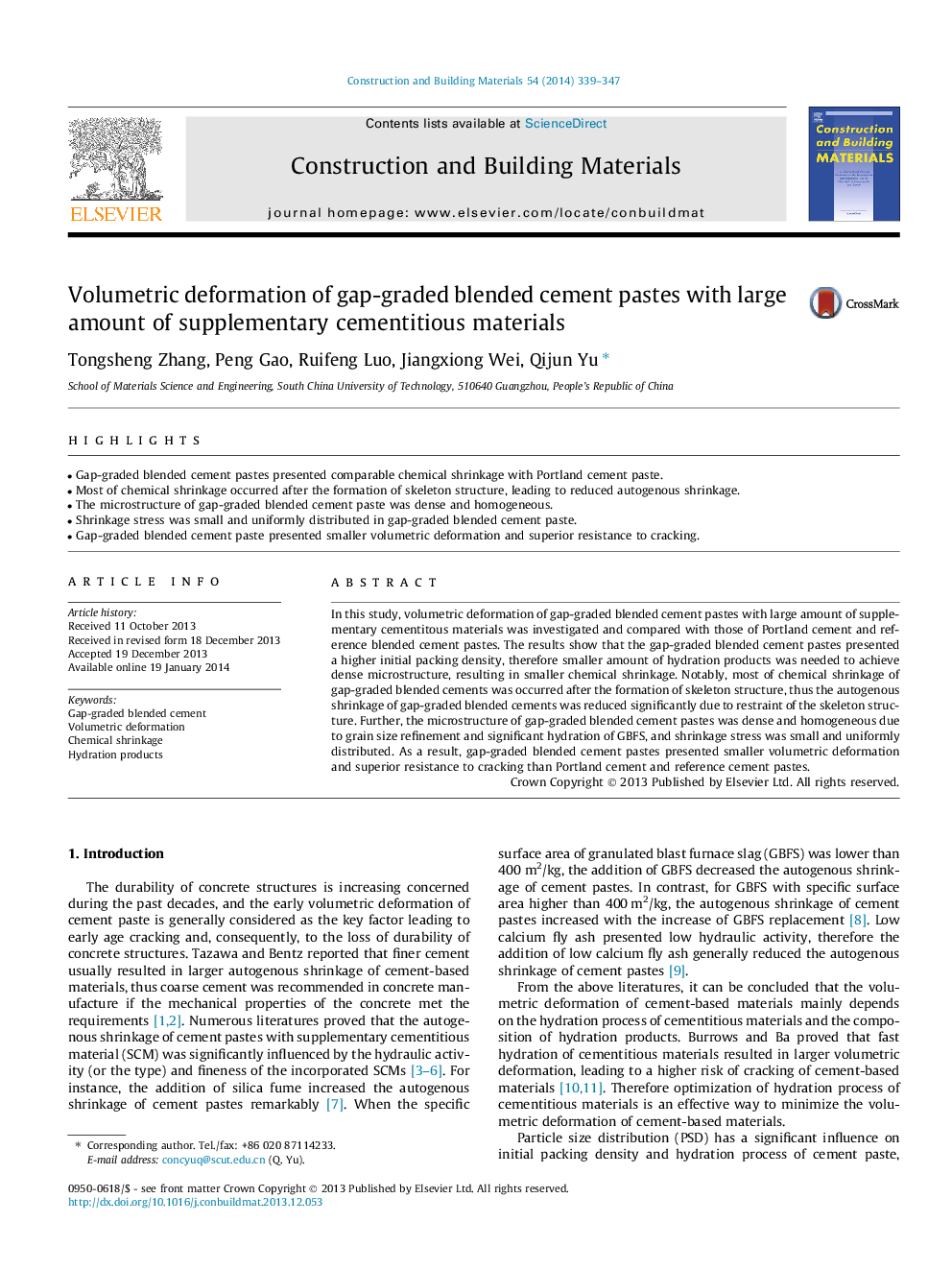| Article ID | Journal | Published Year | Pages | File Type |
|---|---|---|---|---|
| 6723830 | Construction and Building Materials | 2014 | 9 Pages |
Abstract
In this study, volumetric deformation of gap-graded blended cement pastes with large amount of supplementary cementitous materials was investigated and compared with those of Portland cement and reference blended cement pastes. The results show that the gap-graded blended cement pastes presented a higher initial packing density, therefore smaller amount of hydration products was needed to achieve dense microstructure, resulting in smaller chemical shrinkage. Notably, most of chemical shrinkage of gap-graded blended cements was occurred after the formation of skeleton structure, thus the autogenous shrinkage of gap-graded blended cements was reduced significantly due to restraint of the skeleton structure. Further, the microstructure of gap-graded blended cement pastes was dense and homogeneous due to grain size refinement and significant hydration of GBFS, and shrinkage stress was small and uniformly distributed. As a result, gap-graded blended cement pastes presented smaller volumetric deformation and superior resistance to cracking than Portland cement and reference cement pastes.
Related Topics
Physical Sciences and Engineering
Engineering
Civil and Structural Engineering
Authors
Tongsheng Zhang, Peng Gao, Ruifeng Luo, Jiangxiong Wei, Qijun Yu,
